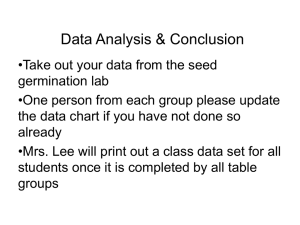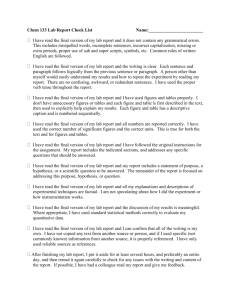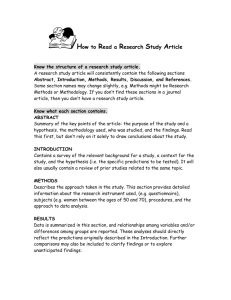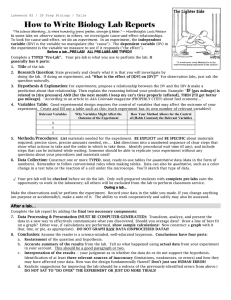Biology Lab Report Format: A Student's Guide
advertisement
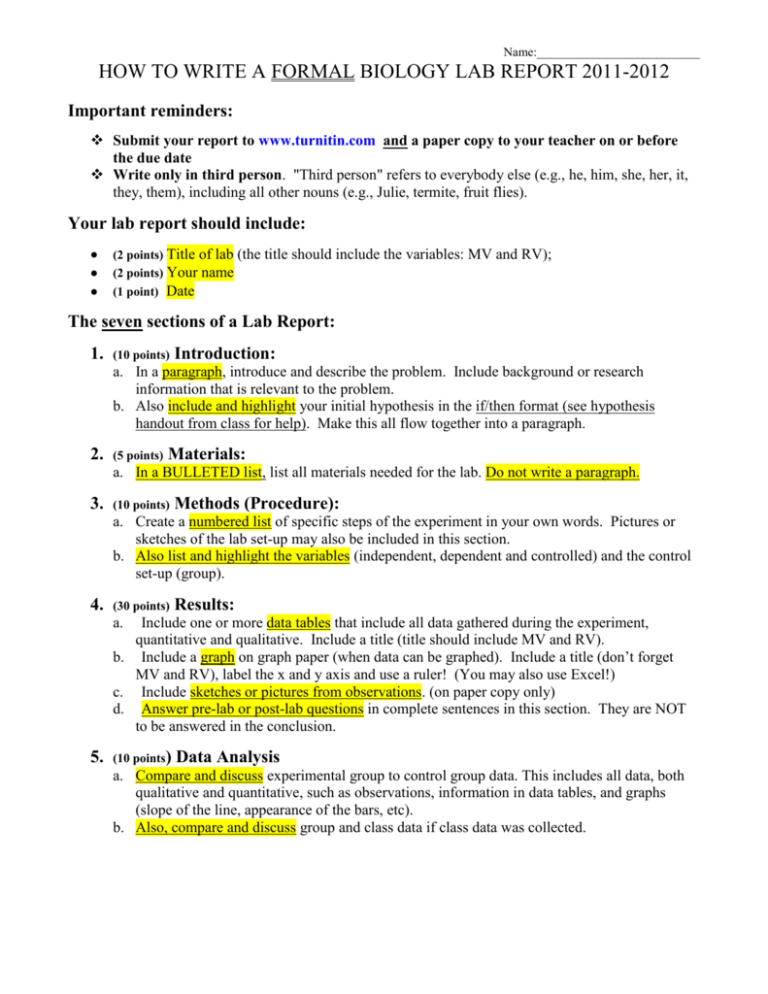
Name:__________________________ HOW TO WRITE A FORMAL BIOLOGY LAB REPORT 2011-2012 Important reminders: Submit your report to www.turnitin.com and a paper copy to your teacher on or before the due date Write only in third person. "Third person" refers to everybody else (e.g., he, him, she, her, it, they, them), including all other nouns (e.g., Julie, termite, fruit flies). Your lab report should include: (2 points) Title of lab (the title should (2 points) Your name (1 point) Date include the variables: MV and RV); The seven sections of a Lab Report: 1. (10 points) Introduction: a. In a paragraph, introduce and describe the problem. Include background or research information that is relevant to the problem. b. Also include and highlight your initial hypothesis in the if/then format (see hypothesis handout from class for help). Make this all flow together into a paragraph. 2. (5 points) Materials: a. In a BULLETED list, list all materials needed for the lab. Do not write a paragraph. 3. (10 points) Methods (Procedure): a. Create a numbered list of specific steps of the experiment in your own words. Pictures or sketches of the lab set-up may also be included in this section. b. Also list and highlight the variables (independent, dependent and controlled) and the control set-up (group). 4. (30 points) Results: a. Include one or more data tables that include all data gathered during the experiment, quantitative and qualitative. Include a title (title should include MV and RV). b. Include a graph on graph paper (when data can be graphed). Include a title (don’t forget MV and RV), label the x and y axis and use a ruler! (You may also use Excel!) c. Include sketches or pictures from observations. (on paper copy only) d. Answer pre-lab or post-lab questions in complete sentences in this section. They are NOT to be answered in the conclusion. 5. (10 points) Data Analysis a. Compare and discuss experimental group to control group data. This includes all data, both qualitative and quantitative, such as observations, information in data tables, and graphs (slope of the line, appearance of the bars, etc). b. Also, compare and discuss group and class data if class data was collected. Name:__________________________ HOW TO WRITE A FORMAL BIOLOGY LAB REPORT 2011-2012 6. (25 points) Conclusion: one or more paragraphs a. Describe your initial problem and hypothesis. Explain if your hypothesis was correct or incorrect and why. This should flow into your conclusion and data discussion. Make sure this is all flowing together into a paragraph! b. State your conclusion based on the data. Refer to specific data and explain how this data relates and supports or refutes your hypothesis and conclusion. c. If the data refutes your hypothesis, suggest what should happen next. d. Never include any personal feelings in your conclusion (ex: This was fun!) 7. (5 points) Errors/Improvements: a. Describe errors that may have occurred during the experiment that resulted in poor data. How did this affect the results? What steps could have been done to avoid the errors? How could you change the procedure to improve your experiment, if at all? b. Suggest a new experiment if the data is not conclusive, or if the experiment leads to a new question. c. Do not leave this section blank! There are ALWAYS errors and improvements to suggest. Remember: All work should be your own work. During the lab you will work in groups, but the lab report is an individual assignment. If you are caught cheating, everyone involved will receive a zero. Universal Truths: No opinions unless requested. Use only the third person when writing Straight edges used for tables, graphs (paper copy) Graph on graph paper or Excel Italicize scientific names. Ex. Homo sapiens Descriptive scientific titles (include dependent and independent variables) Label everything Always show calculations—all of them(within document or on paper copy) Number and answer all questions in complete sentences How to write an informal conclusion to a lab group activity: Informal conclusions are required for some lab activities that are not experiments (ex: microscope lab – learn how to use a microscope). They should be typed in paragraph form and include a restatement of the purpose, along with a specific discussion of what was learned during the activity. If you have questions about this please feel free to ask for clarification.
